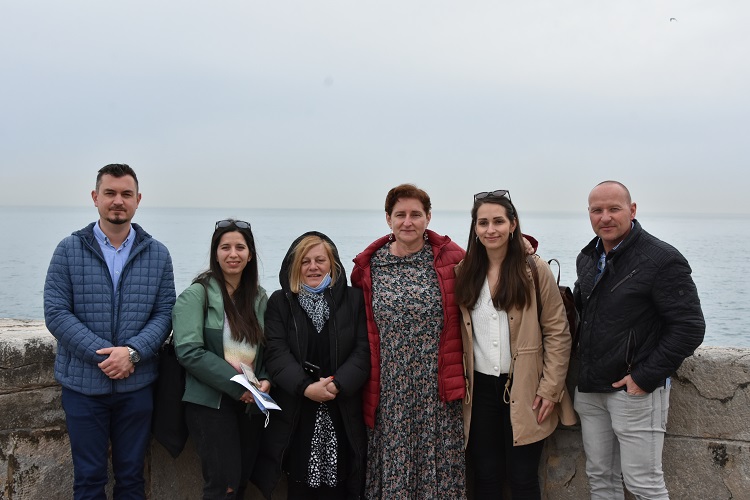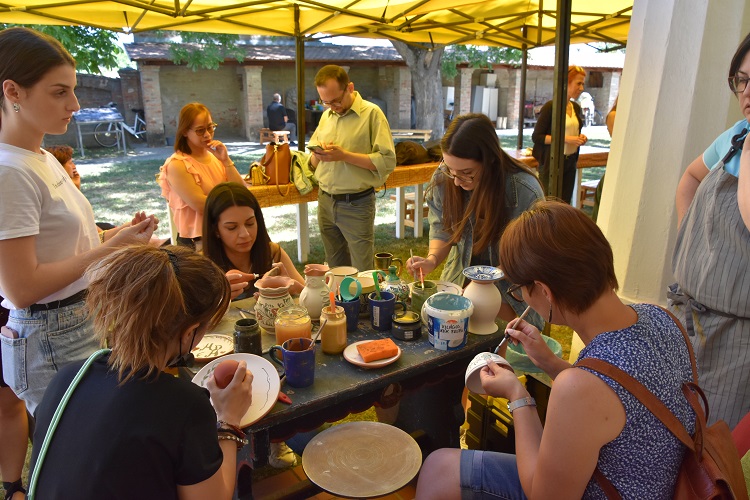
How can we preserve the rich traditions of the elderly make them useful for our communities? How can we actively involve older people? The Erasmus+ project Your Treasure - Our Treasure sought to address key issues in our ageing societies.
Your treasure – our treasure
We talked to Gabriella Pusztai, director, and tender coordinator of the General Cultural Centre of Kunszentmárton.
What motivated you to get involved in the project?
Small towns of the Great Plain have been experiencing a change in the age composition of their population for many years. The proportion of young people is decreasing, and the number of older people in the municipalities is increasing. This is a particularly big problem in Kunszentmárton. Therefore, the greatest challenge our institution is facing today is working with the elderly in a much more focused, conscious, and organized way. Doing so, in addition to the tools of andragogy and geronto-andragogy, we would also like to use the methods of cultural fields. Two years ago, we decided that we wanted to move forward and learn how we can deal with people over the age of 55-60 in a way that would be more fruitful for them. We wanted to learn effective ways of discovering and communicating the values of older generations.
What activities were carried out during the project?
Since several surrounding municipalities besides Kunszentmárton are facing similar challenges, the Martfű Cultural Centre, and the Museum of Mezőtúr joined us immediately and we started looking for good practices that could be useful for us. We started looking for partners in southern Europe, as they are the ones most affected by the challenges of an ageing society on the continent. Our foreign partners are far ahead of us in solving the problems, they have developed special good practices, so we wanted to learn from them. Within the framework of the project, we implemented five one-week trainings in Hungary and in four southern European countries.

What was your most memorable moment?
We started the project in a demanding situation, we were supposed to hold the first training in the early days of the pandemic. There was a lot of discussion about whether and how to continue working together. However, there came a moment when all the partners came on board and together, we decided to implement the project – and to do so with a personal presence at the right time.
What is the biggest change within the institution that the project has brought about?
The knowledge and experience gained from the training made us confident that we can achieve spectacular results in our work with the elderly using the new methods. Our project introduced us to a world where strong and well-functioning organizations and institutions are successfully tackling problems in which we are still in our infancy. We also gained a lot of experience in organizing in networking. We saw good examples of organizations with 1-2 staff and many volunteers changing the lives of hundreds of people for the better.
How has the knowledge and experience gained during the project integrated into the everyday life of the institution?
Based on the above experiences, during the project we established a network of contacts–mainly in our municipality – which provides sufficient resources for our work with the elderly. Social and cultural institutions, clubs and organizations for the elderly, our existing elderly volunteers and the town leaders are all part of our network of contacts. As a result, our institution has expanded with several new, large museum programmes, such as tea parties for the elderly with quizzes, literature, and music.
What are you most proud of about the project?
The most uplifting part of the joint work was the Hungarian training we created with the experience gained from foreign partners and our existing museum methodology. The last session, which summarized what we had learned, was implemented in such a way that built on the most varied methodology. In addition, we have compiled and tested a programme package that could serve as a basis for cultural institutions to introduce a new type of programme: for example, building exhibitions from the memories of the elderly, quizzes, baking together following traditional recipes, learning about archery. The learning session was a remarkable success.

How has the project affected you personally?
The most important result for us is the knowledge we have gained. The strength of the Erasmus+ project is that it is people-centred, and its most important aim is to enable participants to acquire knowledge on an individual basis. Equally important, that during the implementation of the project colleagues learned about each other’s strengths. They learned to respect and appreciate each other, and formed a powerful team, working together like cogs in a wheel, so they can move forward, make considerable progress, and turn the Earth on its heel.
What does winning the Excellence Award mean to you?
Being first-time Erasmus+ participants and first-time coordinators, it was a confirmation for all of us. We believe we are moving in the right track in implementing our plans. We did not expect to receive such recognition, it is a great honour for us, for which we would like to thank you. The award proves to the maintainer of the institution and to the participants of our municipal and regional relations system that our intentions and the goals we set are important, and we must continue our work in this direction.
|
Institution: General Cultural Centre of Kunszentmárton Project title: A Te kincsed - a mi kincsünk (Your Treasure – Our Treasure) Measure: Strategic Partnerships for Adult Learning (KA2 ADU) Coordinator: Gabriella Pusztai Project website: yourtreasureourtreasure.eu/ |
Zsuzsanna Karnuts-Takács
Tempus Public Foundation,
Directorate of Communication
Last modified: 19-12-2023















